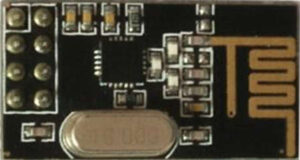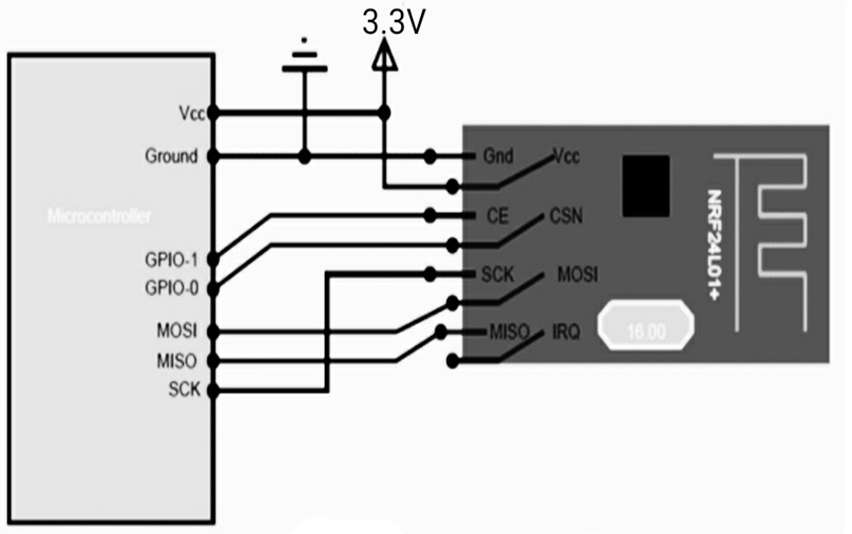- It is a wireless transceiver RF module, where each module can send and receive data.
- It operates on the 2.4 GHz ISM band, and the technology is approved for engineering applications in almost all countries.
- NRF24L01 module can cover 100meters when operated efficiently.
- This module is powered by 3.3 Volts, so it can be easily used in both 3.2 Volts and 5 Volts systems.
- Every module has an address range of 125 to communicate with the other 6 modules.
- It also allows several wireless units to communicate with each other in a specified location.

Working of NRF24L01
- This module is widely used in mesh networks, other types of networking applications, data transmissions, toys, remote controls, computers, games, and electronic devices.
- The diagram shows how the module connects to the microcontroller. We discussed 3.3V microcontrollers here, this also applies to 5V microcontrollers.
- The SPI pins (MISO (MOSI and SCK)) are connected to the microcontroller’s SPI pins, and the signal pins (CE and CSN) are connected to the microcontroller’s GPIO pins.

- By connecting the module to Arduino, we can also use ready-made libraries such as the R24 library. This library allows the NRF24L01 module to easily interface with the Arduino with a few lines of code.
- If we are using a different microcontroller, we should read the datasheet to learn how to set up SPI communication.
- The NRF24L01 RF module is difficult to use, even though there are several clone versions on the market.
- If there is an issue with its working, then add 0.1uF and 10uF capacitors in parallel to the ground and supply (VCC) pins. Be sure that the 3.3 Volts supply is noise-free and clean.
Applications of NRF24L01
- Keyboard, wireless mouse, and joysticks.
- Wireless data communication systems.
- Security and alarm systems.
- Keyless entry.
- Home automation systems.
- Automotive applications.
- Telemetry.
- Surveillance.
- Intelligent sports equipment.
- Toys.
- Industrial sensors.
